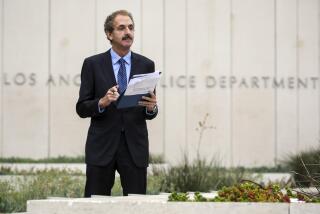Getting Real About Water Supplies
As if the electricity crisis weren’t enough for Californians to worry about, water experts are warning about the consequences of the next drought. No one knows when that water shortage will come, but it’s a good bet it will be within this decade. Statistically in California, the next drought is always just around the corner. Even without drought, the development of new water supplies is far more difficult and time-consuming than building new electric power plants.
The obvious lesson is for California not to act as if it has an endless supply of water. But that is exactly what seems to be happening as local and state planning officials continue to routinely approve massive new housing projects without any certainty that they will have enough water.
The Legislature tried to end this reckless practice in 1995 when it passed Senate Bill 901, authored by Sen. Jim Costa (D-Fresno). The Costa measure provided that any project large enough to require an environmental impact statement must meet five criteria in demonstrating that it had enough water to satisfy its future needs, in dry years as well as wet ones.
But SB 901 has been a failure. An analysis by the Oakland-based East Bay Municipal Utility District shows that of 119 projects with a projected population of 582,000, only two fully complied with the law in 1996-2000. Sixty percent of the projects provided only the first and most basic requirement of SB 901, identifying the source of projected water supply.
For several years, Randele Kanouse, the lobbyist for East Bay, has fought to give California stronger legislation to assure adequate water supplies for future development but has been thwarted by development forces. In each of the last two years, state Sen. Sheila Kuehl (D-Santa Monica) authored bills that would have required new subdivisions of 200 homes to provide evidence of adequate water supplies before they could win construction approval. Both of the bills were defeated.
Last summer, the Assn. of California Water Agencies joined developers in opposing the Kuehl legislation, saying SB 901 was on the books and should be doing the job. The water agencies acknowledged that SB 901 might have loopholes and suggested a study to see whether it needed to be strengthened. This shameless action came from the public water agencies that are supposed to be guaranteeing Californians they will have enough water.
Now they have their study. And they also have a new bill, Costa’s SB 610, to plug the loopholes by being more specific about the data that must be provided. And they have SB 221, by Kuehl, to make sure the water requirements are met before subdivision construction actually begins, just in case there are more loopholes.
There is much that Sacramento needs to do to make sure California is not surprised by a water shortage the way it was the electricity crisis. Lawmakers can begin by passing both SB 610 and SB 221.
More to Read
Start your day right
Sign up for Essential California for news, features and recommendations from the L.A. Times and beyond in your inbox six days a week.
You may occasionally receive promotional content from the Los Angeles Times.






